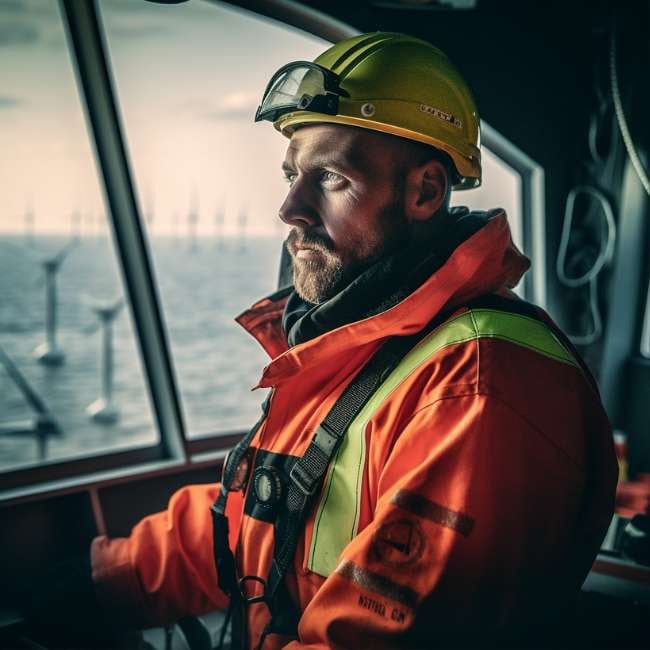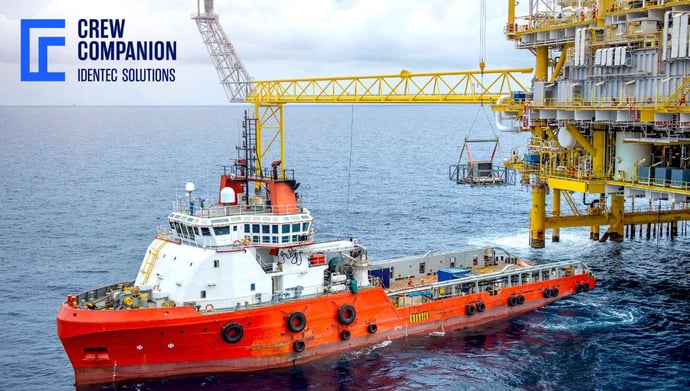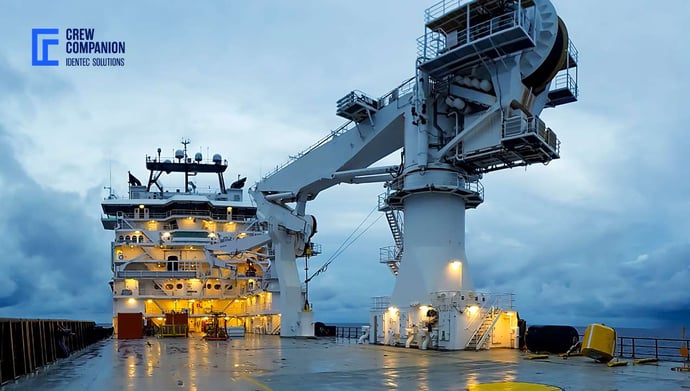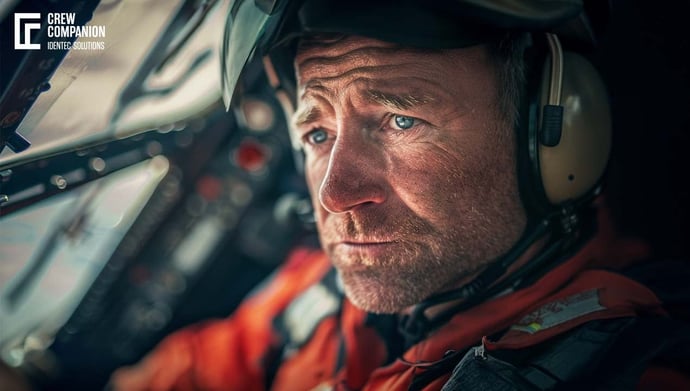SOV: Why Emergency Preparedness is Important
| Written by Michal Wozniakowski-Zehenter

No video selected
Select a video type in the sidebar.
PREPAREDNESS
The seas are ever-changing entities; one could experience placid waters at one moment and confront tempestuous storms the next, rendering even well-charted courses precarious. Despite the marvels of modern vessel engineering, vessels are not immune to hazards. A minor ignition can escalate into a destructive conflagration if not promptly addressed. Similarly, a seemingly insignificant mechanical error can jeopardize the vessel's operations if overlooked. Taking the right steps ahead of time and being ready is vital to avoid possible disasters at sea. And while a ship's structure and equipment are essential, nothing is more precious than the people onboard: the crew. Their safety is the most important and is achieved through consistent training, regular drills, and the deployment of state-of-the-art safety apparatus.
A proficiently trained crew is better equipped to handle challenges, enhancing the chances of circumventing potential disasters. Vessels inherently bear a duty to safeguard the environment. Regrettably, the maritime sphere has experienced the fallout from environmental misfortunes, notable among them being oil spills. Ensuring environmental stewardship is not only an ethical obligation but a key component of maritime operations. From a pragmatic perspective, the financial implications of unpreparedness can be substantial. Think about the hit a company might take from lost goods, hefty ship repair bills, or the legal headaches after a mishap. So, putting money into being ready for anything isn't just smart—it's good for the wallet, too.
And let's not forget that bad news spreads like wildfire in our super-connected world. Maritime businesses (like windfarm maintenance), more than any other, need to underline just how essential being prepared really is. It's not just about dodging potential setbacks; it's about earning and keeping the trust of the broader world out there. To boil it down, being on the ball when it comes to maritime emergencies isn't just a wise move—it's the bedrock for keeping crews safe, cargo intact, and a company's reputation spotless, no matter what the ocean throws at them.
State-OF-THE-ART
Modern SOVs come fitted with state-of-the-art dynamic positioning systems, blending GPS, thrusters, and sensors to hold their precise location, even amidst the harshest of weather conditions. This top-notch tech means that these ships can keep doing their thing or move folks around fast, even when the sea gets rough or the winds pick up. Thanks to dynamic positioning, SOVs can stand their ground against Mother Nature's moods, giving a steady and safe platform for jobs out at sea. Continuously tracking the ship's stance, these systems instantaneously modify its thrusters, propellers, and rudders, anchoring it to the exact spot with notable precision.
This thing really shines for SOVs working with offshore wind farms, especially in the Northern Europe. These vessels are like the handyman for wind turbines that are way out in the water. Collaborating with respected bodies like the Global Wind Organization (GWO), SOVs make certain that their teams undergo exhaustive, standardized safety and technical drills.
GWO really knows their stuff when it comes to safety and technical details for offshore wind. That's why they're at the top of the list when SOVs need a partner. Sticking to GWO's thorough training, crew members get all the know-how they might need out at sea. They learn everything, from handling emergencies to giving first aid, so they're ready to face challenges head-on with confidence and expertise. This alliance of SOVs with GWO doesn't solely vouch for crew safety but amplifies the overall efficacy of offshore wind farm undertakings. Having a highly-trained brigade means these SOVs can adeptly manage emergencies, curtailing interruptions and bolstering the wind farm's overall output.

BUT WHAT IS IMPORTANT?
For those engaged in offshore operations, the presence and meticulous maintenance of life-saving equipment—such as lifeboats, life jackets, and immersion suits—are paramount. When an emergency strikes, every moment counts, and having reliable equipment can mean the difference between making it out safely or facing dire consequences.
Offshore entities must also be cognizant of fire-related hazards. Having up-to-date firefighting gear, especially good fire suppression systems, is key for handling sudden fires. Having a solid set of fire alarms throughout the facility means we can catch and react to any fire early on. Don't overlook the rapid-response teams.
Using the right tools is key to smooth sailing offshore. With top-notch radar, GPS, and sonar, we can easily track where we are and see anything in our way. These gadgets give our crew real-time information, helping them make smart choices on the fly and avoid any hiccups.
And if things do get a bit dicey, having a rock-solid communication setup is a game-changer. Utilizing robust satellite communication systems guarantees consistent communication lines, even from the most remote locales. This ensures prompt liaison with emergency services and relevant authorities, ensuring timely aid during exigent circumstances.
To bolster emergency responsiveness, ongoing training initiatives are non-negotiable. Regular practice drills help the crew get familiar with what to do in emergencies, making them faster and better at handling situations. This practice also boosts their confidence, making for a safer work environment. In contingencies like oil spills, it's vital to have mechanisms like oil booms and skimmers ready.
Given the remote nature of many offshore sites, on-site medical provisions—equipped with both fundamental and advanced medical supplies—are crucial. Having trained medical staff on board means that any health issues get sorted out quickly and professionally. To wrap up, it's very important to regularly check and maintain our main equipment (read more about how to prepare for an EHS audit).
The Role of Leadership in Emergency Preparedness
Leadership is one of the most neglected variables regarding emergency preparedness on SOVs. Effective leadership ensures that all practices and procedures appurtenant to safety are implemented and adhered to. A good leader may well impress his influence upon the general trend in the safety culture of the crew, influencing them toward accountability and discipline in practice, which becomes highly necessary during periods of high pressure. Because marine environments are so unpredictable, the ability to make quick decisions can spell the difference between an incident and an accident. For this reason, it is expected of the leader to keep his head straight, make reasoned decisions, and instruct his crew accordingly, particularly in times of emergency. Leadership is very important, especially when training and drills have to be conducted continuously. The best emergency response systems are only as good as the crew understands and practices them, and it is up to the leadership team to ensure that training is consistent, comprehensive, and updated as new technologies or procedures emerge. This involves more than just teaching technical skills; teamwork and communication should also be honed, proving pivotal during crises. Good leadership means that drills are taken seriously, and every crew member knows what they are doing in an emergency, enhancing the overall safety and efficiency of SOV operations.
Furthermore, the leaders must support continued investment in safety equipment and training. More importantly, the leaders' commitment can further motivate the approach to risk management proactively so that the crew and the vessel will always be prepared for the worst outcome. In short, good leadership is not only about managing the operations through normal, routine times but also about taking the time to prepare the vessel and its crew to respond promptly and cohesively whenever the unexpected occurs.
FAQ
What are the types of marine emergencies?
Preventing boating emergencies is crucial for safety on the water. Here are five common emergencies and tips to prevent them: collisions - follow navigation rules, maintain a safe speed, avoid alcohol and fatigue; running aground - know your environment, be aware of submerged objects, use charts; fire aboard - practice fueling safety, use fire extinguisher properly, call for help; capsizing and falling overboard - wear life jackets, avoid overloading and sitting in non-designated areas; carbon monoxide poisoning - keep swimmers away from enclosed areas, ventilate, be mindful of exhaust outlets, install CO detectors. Enjoy a safe time on the water by taking safety seriously.
What are the actions to take during emergency situations to ensure safety of operation on ship?
Initial actions when discovering a galley fire include raising the alarm, gathering information, activating fire and bilge pumps, closing doors, expelling fumes, emergency mustering and identifying missing crew, and updating the crew. The shoreside response involves initiating a Mayday alarm and activating the company's response procedure. Subsequent responses to mitigate a galley fire include directing BA teams, closing vent ducts, activating the CO2 smothering system, isolating electrical systems, releasing firefighting appliances, and directing the cooling team if necessary. Additional reporting requirements include downgrading the Mayday alert, ongoing dialogue with the coastguard, informing relevant contacts, and preserving evidence.
For an engine/boiler room fire, initial actions include raising the alarm, gathering information, energizing the emergency generator, activating fire and bilge pumps, closing doors, expelling fumes, mustering, and updating the crew. The shoreside response follows the same process. Subsequent responses to an engine/boiler room fire involve closing ventilation fans and dampers, closing funnel flaps, isolating electrical systems, releasing firefighting appliances, and directing the teams as needed. Additional reporting requirements and follow-up actions are the same as for a galley fire.
TAKEAWAY
Being ready for emergencies isn't just the right thing to do; it's also smart business. Companies working offshore get that a single mishap can hurt people and hit the bottom line. By ensuring their SOVs are in top shape, they're taking care of their crew, their reputation, and their finances.
Wrapping up, SOVs have really upped their game in safety over the years, learning from past mistakes. Being ready isn't just the right thing to do; it's also smart for their business. With offshore work, especially in green energy, becoming more important, SOVs and their top-notch emergency preparedness are more vital than ever.
Dive deeper into one of our core topics: Personnel on board
Sources:
(1) https://www.windsystemsmag.com/preparing-for-a-wind-farm-emergency/
(2) https://industrial-compliance.co.uk/safe-workplace-offshore-walk-to-work-gangway/
Note: This article was updated on the 14th of October 2024

Author
Michal Wozniakowski-Zehenter, Marketing Manager
Michal Wozniakowski-Zehenter is an experienced marketing and project management professional. He spent most of his career on projects with a strong focus on digital marketing and event management. He is a very active voice representing offshore and mining industries through social media channels. Michal writes mainly about offshore oil and gas, renewable energy, mining and tunnelling. Compiling and sharing the knowledge within industries is one of his goals.
Related Articles
Related Product





